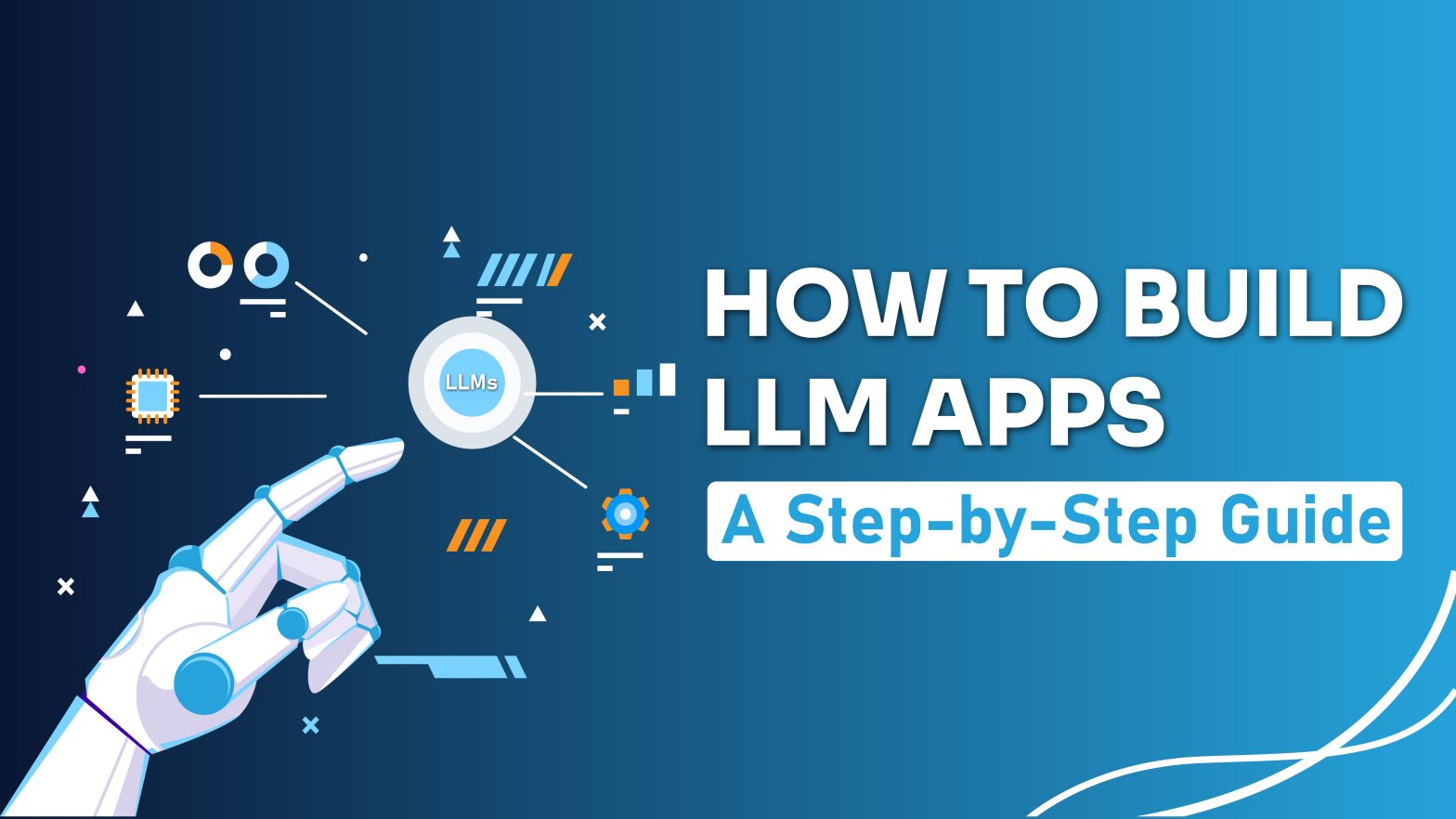Large Language Models (LLMs) are revolutionizing the way we interact with technology, making it easier to build applications that understand and generate human language. Whether you’re a developer looking to integrate LLM capabilities into your app or a tech enthusiast eager to explore this cutting-edge technology, this step-by-step guide will walk you through the process of building LLM apps.
Ever wondered how apps like ChatGPT, Siri, or Alexa understand and respond to your queries so seamlessly? It’s all thanks to Large Language Models (LLMs).
In this guide, we’ll demystify the process of building LLM apps, providing you with the knowledge and tools needed to create your own powerful applications. We’ll cover everything from setting up your environment to deploying your app, ensuring you have a comprehensive understanding of the entire process.
Step 1: Setting Up Your Environment
Before diving into building LLM apps, you need to set up your development environment. This includes installing necessary libraries and tools.
- Install Python: Ensure you have Python installed on your machine. Most LLM libraries are Python-based.
- Install Required Libraries:
- pip install transformers
- pip install torch
- pip install streamlit
These libraries are essential for working with LLMs and building interactive web applications.
Step 2: Choosing the Right LLM
Selecting the appropriate LLM for your application is crucial. Popular models include OpenAI’s GPT-3 and GPT-4, Google’s BERT, and Facebook’s RoBERTa. Each model has its strengths and is suited for different tasks.
Considerations:
- Purpose: Define the primary function of your app (e.g., chatbots, content generation, language translation).
- Model Size: Larger models like GPT-4 offer more capabilities but require more computational resources.
- API Access: Check if the model is accessible via API (e.g., OpenAI provides API access to GPT models).
Step 3: Building the Core Application
Creating a Simple Chatbot
Let’s start by creating a simple chatbot using OpenAI’s GPT-3.
Get API Key: Sign up for an API key from OpenAI.
Initialize the Model:
import openai
openai.api_key = ‘your-api-key’
def generate_response(prompt):
response = openai.Completion.create(
engine=”davinci”,
prompt=prompt,
max_tokens=150
)
return response.choices[0].text.strip()
prompt = “Hello, how can I help you today?”
print(generate_response(prompt))
Adding a Web Interface with Streamlit
To make the chatbot interactive, we’ll use Streamlit.
Install Streamlit: pip install streamlit
Create Streamlit App:
import streamlit as st
st.title(‘Simple Chatbot’)
user_input = st.text_input(“You: “, “Hello, how can I help you today?”)
response = generate_response(user_input)
st.write(f”Chatbot: {response}”)
Run the app using streamlit run your_script.py.
Step 4: Enhancing Functionality
Adding Memory to Your Chatbot
To create a more realistic chatbot, you can add memory to keep track of the conversation context.
Modify the Response Function:
python
Copy code
conversation_history = []
def generate_response(prompt):
conversation_history.append(f”User: {prompt}”)
response = openai.Completion.create(
engine=”davinci”,
prompt=”\n”.join(conversation_history),
max_tokens=150
)
conversation_history.append(f”Chatbot: {response.choices[0].text.strip()}”)
return response.choices[0].text.strip()
Integrating with Other Tools
LLM apps can be integrated with various tools and APIs to expand their capabilities.
Example: Integrate with a calendar API to schedule appointments through the chatbot.
Google Calendar API Integration:
- Install the Google API Client: pip install google-api-python-client
- Authenticate and integrate the API in your chatbot to manage appointments.
Step 5: Testing and Debugging
Testing is crucial to ensure your LLM app works as expected. Use unit tests to verify individual components and integration tests to ensure different parts of your app work together.
Example Unit Test:
import unittest
class TestChatbot(unittest.TestCase):
def test_generate_response(self):
prompt = “What’s the weather like today?”
response = generate_response(prompt)
self.assertIsInstance(response, str)
self.assertGreater(len(response), 0)
if __name__ == ‘__main__’:
unittest.main()
Step 6: Deployment
Deploying your LLM app makes it accessible to users. You can deploy it on cloud platforms like AWS, Google Cloud, or Azure, or use Streamlit Sharing for simpler applications.
- Deploy with Streamlit Sharing:
- Push your code to GitHub.
- Go to Streamlit Sharing and link your GitHub repository.
- Follow the prompts to deploy your app.
- Deploy with AWS:
- Set up an EC2 instance.
- Install required libraries and run your Streamlit app on the instance.
Conclusion
Building LLM apps is a rewarding endeavor that combines the power of artificial intelligence with practical application development. By following this step-by-step guide, you can create your own LLM apps that are both functional and user-friendly.
Ready to build your own LLM app? Start by setting up your environment and experimenting with simple models. Share your creations with the world and see the incredible impact of LLM technology.
Looking for expert help to bring your AI ideas to life? At OCloud Solutions, we specialize in developing cutting-edge AI applications tailored to your needs. Contact us today to learn how we can help you harness the power of AI to transform your business.
FAQs
What is an LLM app?
An LLM (Large Language Model) app is an application that leverages large language models to understand, generate, and interact with human language. These apps can perform tasks such as answering questions, generating text, and understanding context. Examples include chatbots, content generation tools, and virtual assistants.
What are the benefits of using LLMs in app development?
Using LLMs in app development offers several benefits, including:
- Enhanced User Interaction: LLMs provide more natural and intuitive user interactions.
- Automation: They can automate tasks like customer support, content creation, and data analysis.
- Scalability: LLMs can handle a large volume of interactions simultaneously, making them suitable for scaling applications.
- Customization: They can be fine-tuned for specific tasks, industries, or user needs.
How do I choose the right LLM for my app?
Choosing the right LLM depends on several factors.
- Purpose: Identify the primary function of your app (e.g., chatbot, content generation, translation).
- Model Capabilities: Evaluate the capabilities of different models (e.g., GPT-3, BERT, RoBERTa) and their suitability for your needs.
- Resource Requirements: Consider the computational resources required to run the model.
- API Access: Check if the model is accessible via API and the associated costs.
- Community and Support: Look for models with strong community support and documentation to help you during development.
